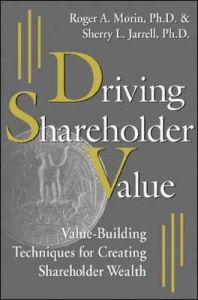Join getAbstract to access the summary!

Join getAbstract to access the summary!
Roger A. Morin and Sherry L. Jarrell
Driving Shareholder Value
Value-Building for Creating Shareholder Wealth
McGraw-Hill, 2001
What's inside?
Value Drivers: More than just another lame cliché.
Recommendation
Every so often, the language of consultants seeps into general use throughout the business world and beyond. This is certainly the case with the phrase "value driver," which in the late 1990s became ubiquitous in corporate conference rooms. But how many of us have actually given detailed thought to what value drivers actually are, how they should be identified and managed, and how they should fit within the confines of your overall corporate strategy? Luckily, Roger Morin and Sherry Jarrell have given this subject more than enough thought to rescue a concept in dire danger of slipping into cliché. Warning: This is not a breezy, skim-it-in-an-afternoon, how-to book. If you don’t crunch numbers, this is not the book for you. However, getAbstract.com does recommend this book to anyone willing to grapple with its equations and graphs. They’re not too painful, and even if the strategic concepts are not entirely innovative, they do add weight to some overused and poorly understood business jargon.
Summary
About the Authors
Roger A. Morin, Ph.D. is a professor in Georgia State University’s Robinson College of Business Administration. He has more than 25 years of experience in executive training and corporate consulting for dozens of clients, including AT&T and Bell South. Sherry L. Jarrell. Ph.D., is assistant professor of finance and economics at Wake Forest University’s Babcock Graduate School of Management. She has also written for many publications including Journal of Business, Financial Management, Quality Managers Journal, Financial Practice and Education, and Harvard Business School Press.

















Comment on this summary